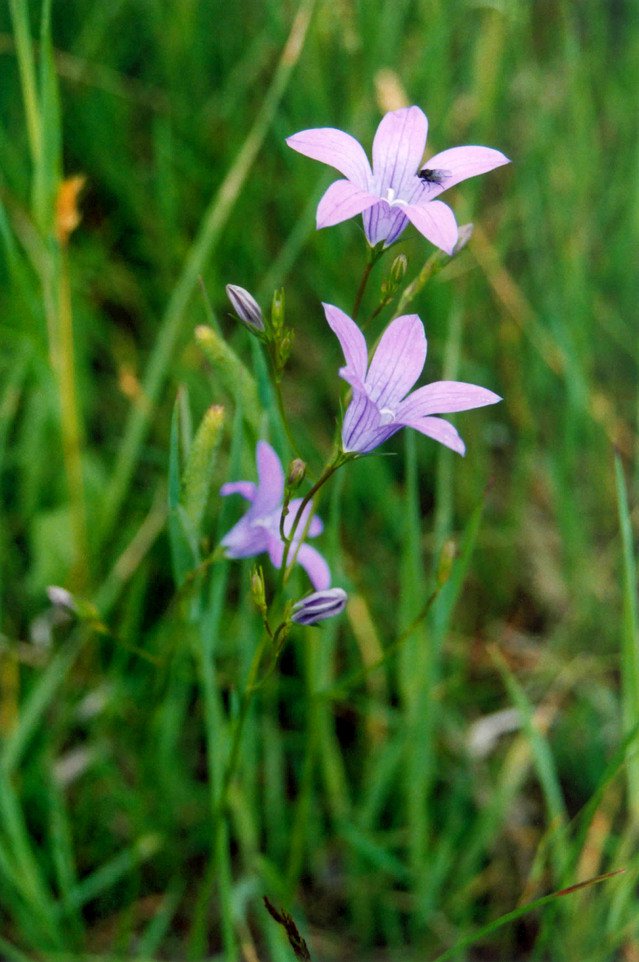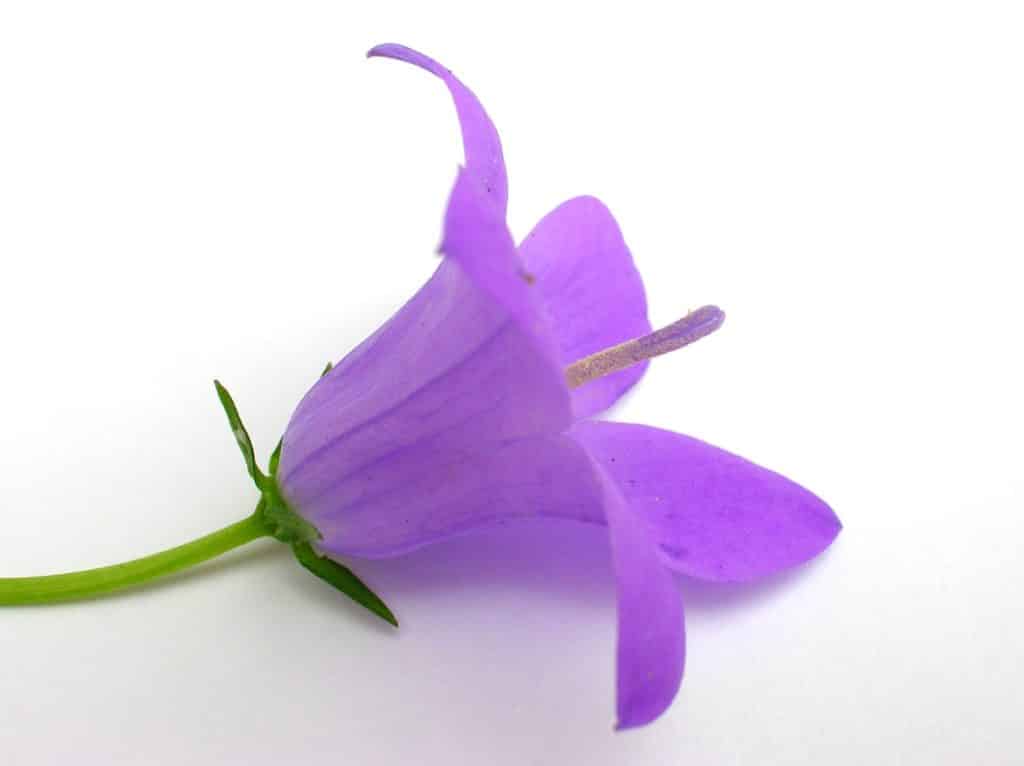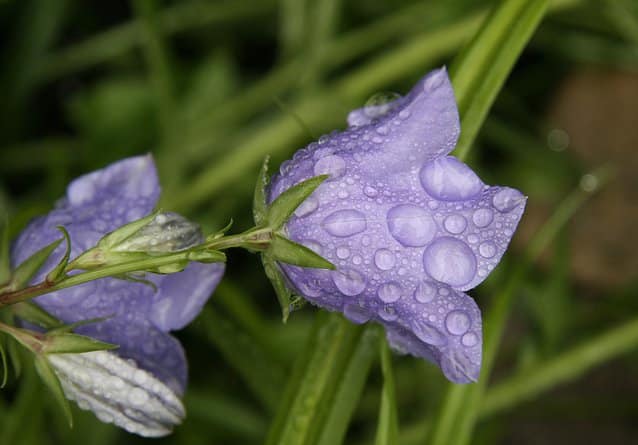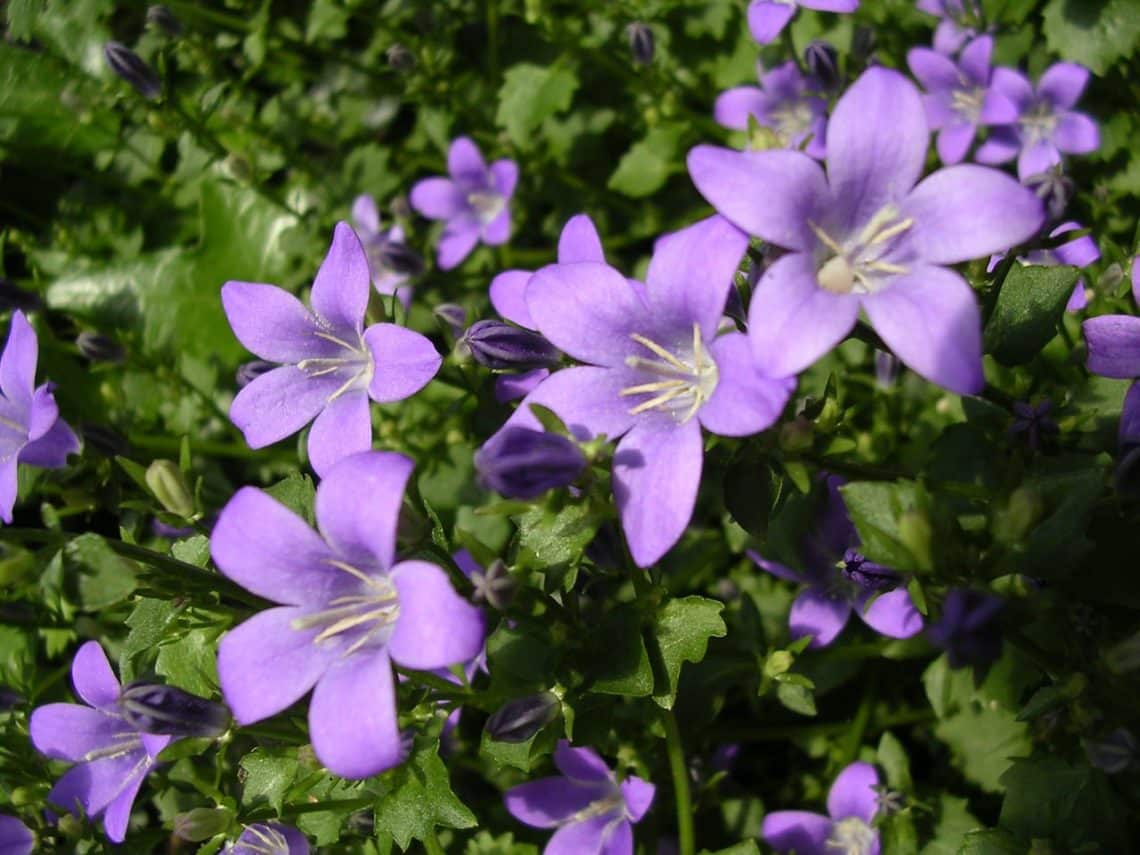Also known as bellflower, campanula is an easy-to-grow flower that blooms throughout the summer months and into fall. The plant generally grows 1 to 3 feet high, and the flared, purple blossoms are easy to spot—even from a distance.
To have the best luck growing campanula, keep the following cultivation tips in mind.
Plant in full sun. Campanula requires bright light to flower well. Locate in an area that receives a minimum of 6 to 8 hours of sun each day.
Provide moist, well-drained soil. Bellflowers do best in soil that retains moisture yet drains quickly. Prior to planting, amend the soil with compost and pumice. After amending, check drainage by digging a 6- to 8-inch-deep hole and filling with water. It should drain completely within a couple of hours. If the area doesn’t drain quickly, amend the soil even more.
 Campanula (Adriana Herbut/Freeimages.com)
Campanula (Adriana Herbut/Freeimages.com)
Water regularly. Keep the soil surrounding campanula moist but not soggy. Water when the top inch of soil dries out. Avoid letting the soil dry out completely between waterings.
Mulch. Conserve soil moisture in the campanula bed and prevent weeds by mulching with a 2- to 3-inch layer of shredded bark. Doing so keeps the soil moist, preventing the plants from getting overheated or drying out, which helps preserve the blooms.
 Campanula (Chrissi Nerantzi/freeimages.com)
Campanula (Chrissi Nerantzi/freeimages.com)
Fertilize periodically. Campanula thrive if fed once in the early spring and again midsummer. Use an all-purpose, organic fertilizer for blooming plants, such as a 5-10-10 or a 10-20-20. Water the soil well after feeding.
Prune often. To promote repeat blooms, prune off spent flowers with pruners or by pinching as soon as flowers fade.

Campanula (Gerla Brakkee/Freeimages.com)
Divide and transplant. Every two to four years, when campanula plantings become crowded, dig up and divide the flowers and replant. This is best done in early spring.
Watch out for pests and disease. Snails and slugs will quickly devour campanula. Remove and destroy the pests when you see them. Avoid overhead watering, as the excess moisture on the foliage can attract these invaders. The disease powdery mildew can also be a problem for campanula. The condition causes a white coating on leaves and stems, as well as wilting and flower and foliage loss. Prevent mildew by planting in an area of the garden that receives good air good air circulation.
Julie Bawden-Davis is a garden writer and master gardener, who since 1985 has written for publications such as Organic Gardening, The American Gardener, Wildflower, Better Homes and Gardens and The Los Angeles Times. She is the author of seven books, including Reader’s Digest Flower Gardening, Fairy Gardening, The Strawberry Story Series, and Indoor Gardening the Organic Way, and is the founder of HealthyHouseplants.com.

